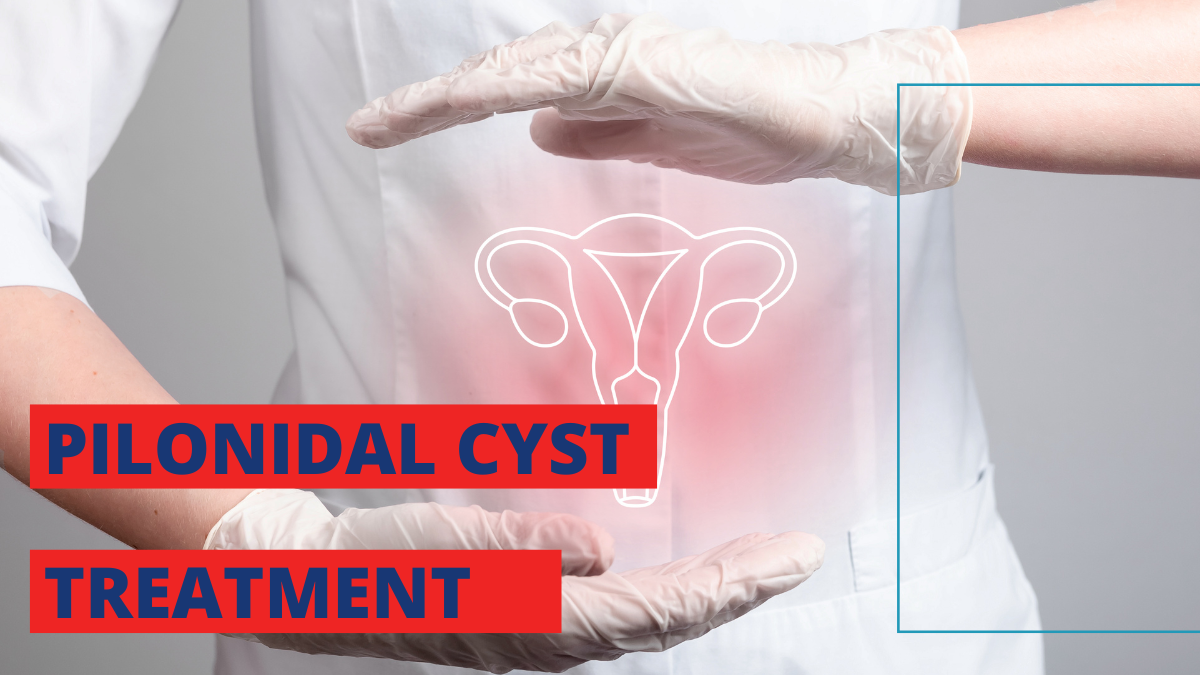
What Is The Procedure To Remove A Pilonidal Cyst?
You’ve arrived at the Dr. Kamrava Clinic, where we care deeply about your physical and mental well-being. Today, we’ll talk about pilonidal cysts, which can be unpleasant and even severe if not addressed. What are pilonidal cysts, what causes them, how to avoid getting one, and most importantly, how to get rid of one, are all topics we’ll cover in this article. Further, we’ll discuss pilonidal cyst treatment alternatives for people who may be affected. So, let’s dive into this informative journey together.
Understanding Pilonidal Cysts
It is a cyst that frequently develops at the base of the spine, not far from the buttocks’ cleft. Pilonidal cysts can hurt, be pus-filled, and occasionally look like an abscess or pimple. They usually strike young people, and they happen more frequently in males than in women.
What Causes Pilonidal Cysts?
The exact cause of pilonidal cysts isn’t always clear, but there are several contributing factors that may lead to their development:
1. Hair Follicles:
Pilonidal cysts are often associated with ingrown hairs. When hair penetrates the skin, it can trigger an immune system response, leading to the formation of a cyst.
2. Friction and Pressure:
Individuals who spend prolonged periods sitting or have a sedentary lifestyle may be at higher risk. This is because constant friction and pressure in the buttock area can irritate the skin and promote cyst formation.
3. Poor Hygiene:
Maintaining good hygiene in the buttock area is crucial to prevent pilonidal cysts. Accumulation of sweat and dirt can clog hair follicles, increasing the likelihood of cyst formation.
How to Prevent Pilonidal Cysts?
Preventing pilonidal cysts largely revolves around good hygiene practices and reducing risk factors. Here are some tips to help you avoid this uncomfortable condition:
1. Regular Cleansing: Daily showers and baths should properly clean buttocks. Make sure to dry the area well afterward.
2. Hair Removal: Consider hair removal methods such as shaving or waxing in the affected area. Reducing hair growth can lower the risk of ingrown hairs.
3. Avoid Prolonged Sitting: If your lifestyle involves sitting for extended periods, take breaks to relieve pressure on the buttocks.
4. Maintain a Healthy Weight: Obesity can increase the risk of pilonidal cysts. Staying within a healthy weight range can help reduce this risk.
Let’s move on from the introduction and into the meat of this essay, which is the process of removing a pilonidal cyst.
Procedure to Remove a Pilonidal Cyst
There are essentially two methods for treating pilonidal cysts: conservative therapy and surgical surgery. The cyst’s severity and the patient’s general condition will determine the best course of action.
1. Conservative Treatment:
A cyst may be treated conservatively if it is tiny and not causing considerable pain or discomfort. This typically involves:
– Antibiotics: To treat any existing infection.
– Pain Management: Over-the-counter pain relievers can help alleviate discomfort.
– Warm Compresses: Applying warm compresses can promote drainage and relieve pain.
2. Surgical Removal:
For larger or recurrent pilonidal cysts, surgical intervention is often necessary. The most common surgical procedures include:
– Incision and Drainage: In this procedure, the surgeon makes an incision to open the cyst, allowing it to drain. This is usually done under local anesthesia.
– Excision and Closure: A more extensive surgical option involves removing the entire cyst and surrounding tissue. The wound is then closed with stitches. This may require a longer recovery period.
The choice between these surgical options depends on the cyst’s size, location, and the patient’s overall health. Our experienced team at Dr. Kamrava Clinic will assess your specific case and recommend the most suitable approach.
Home Treatment for Pilonidal Cysts
While we strongly recommend consulting a medical professional for proper diagnosis and treatment, there are some home remedies that may provide temporary relief or aid in the healing process:
1. Warm Baths: Soaking in a warm bath can help reduce pain and promote drainage. Adding Epsom salts to the bathwater may also be soothing.
2. Clean and Dress the Area: Keeping the affected area clean is crucial. Use mild soap and water to clean it, then apply a sterile bandage.
3. Over the Counter Pain Relievers: Ibuprofen and acetaminophen are over-the-counter painkillers.
4. Avoid Tight Clothing: Loose clothes reduces cyst inflammation.
However, home therapies should not replace medical care, especially if the cyst is big, painful, or recurring. Preventing problems requires prompt medical attention.
Conclusion
Pilonidal cysts can be an uncomfortable and painful condition, but with the right treatment, they can be effectively managed. Preventing these cysts through good hygiene practices and lifestyle adjustments is the first step. If you do develop a pilonidal cyst, remember that you have options for treatment, ranging from conservative measures to surgical intervention.
Here at the Dr. Kamrava Clinic, your health and happiness are our top concerns. If you or a loved one has pilonidal cysts, contact our trained medical professionals immediately. We provide personalized care and guidance. We will be with you throughout to ensure your safety and well being. Get in touch with us immediately for professional help with pilonidal cyst treatment and stop letting them ruin your life.
If you have any questions concerning pilonidal cyst treatment or any other medical issues, we strongly urge you to contact us. We’re here to help you enhance your wellbeing and satisfaction with life.



